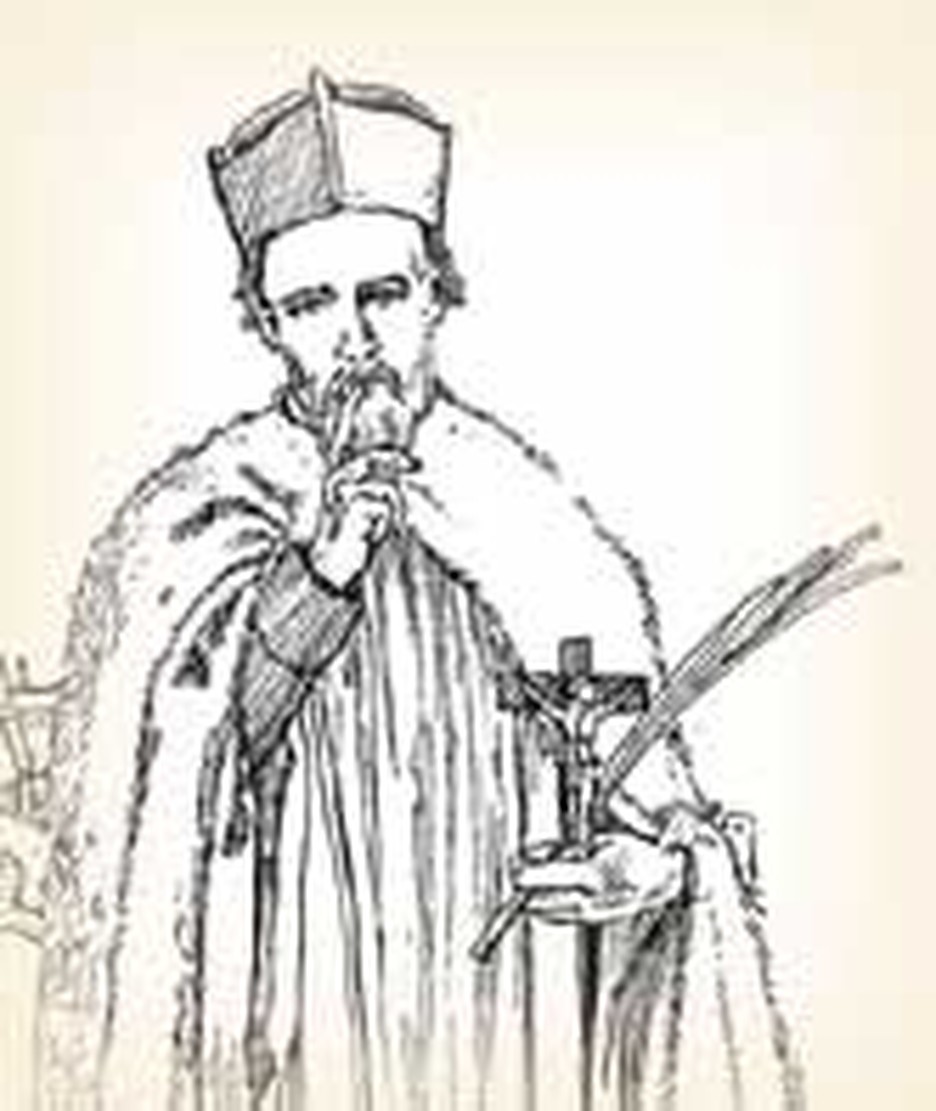
John of Nepomuk was Vicar-general to the archdiocese of Prague. As such he had to carry out the orders of his superior, Archbishop John of Genzenstein, who had a quarrel with the King. His obedience cost him his life but made him the principle patron saint of Bohemia, although not until many falsehoods had attached themselves to his story.
King Wenceslaus IV, a wicked and cruel man, became enraged after the church balked him over some lands he was trying to confiscate for a favor. It was his intention to appoint his own man as abbott of Kladrau. Nepomuk, as vicar of the Archbishop, appointed a different man. Wenceslaus had John drowned in March 1393.
In some accounts he ordered John of Nepomuk and the Dean of the cathedral tortured. In his fury he personally assisted in the cruelties, applying a burning torch to John's side. His anger sated, Wenceslaus decided to free the victims but stipulated that they must say nothing of what he'd done to them. John, however, was too far gone to be released. Seeing that John was dying, Wenceslaus determined to get rid of the evidence of his brutal handiwork and trussed John up with a gag so he could not cry out. His heels were tied to his head and he was carried secretly through town and dumped in the River Moldau.
According to legend, Wenceslaus' attempt to cover up his crime failed. John's body washed ashore the next day. The people immediately recognized the corpse. They buried John in the Cathedral of St. Vitus. The Bohemians considered him both martyr and saint, and revered his relics, honoring him much as Ireland honors Patrick. Later writers invented more details. Centuries passed and a metal plaque was affixed to the bridge from which he was allegedly thrown.
In 1729, Pope Benedict XIII canonized St. John of Nepomuk although by then the real historical person was lost in myths and deliberate lies. In fact, the paperwork claimed there were two Johns of Nepomuk. The evidence suggests Benedict canonized the mythical second man because he wanted a Catholic martyr to counterbalance the memory of Jan Hus. This day, May 16th became Nepomuk's feast day.
The Roman Church, Church of England and some other denominations, hold certain days as feast days. Feasts commemorating major events in Christ's life are obligatory, and so are some feasts in honor of Mary. On those days mass is said and the laity must abstain from servile work. Such are Epiphany, Corpus Christi, Christmas and a few others. There are however many feasts where are not obligatory upon all Christians, but only within limited regions. St. Patrick's feast day is obligatory in Ireland but not in Czechoslovakia, for example.
Every saint is awarded a fixed feast date on which to be commemorated. These are non-obligatory or lesser feasts; otherwise every day of the year would be booked (and sometimes overbooked), because of the many saints who have been canonized.
John of Nepomuk's earned his feast over a petty quarrel. In a popular version of his story, he was even more heroic. It is said Wenceslaus was so spiteful toward John because the priest refused to divulge the secrets of the Queen's confessional.
Bibliography:
- Baring-Gould, S. Lives of the Saints. Edinburgh: John Grant, 1914. Source of the image.
- "John of Nepomuk, St." The Oxford Dictionary of the Christian Church. Edited by F. L. Cross and E. A. Livingstone. Oxford: Oxford University Press, 1997.
- Loesche, Georg. "John of Nepomuk." New Schaff-Herzog Encyclopedia of Religious Knowledge. Grand Rapids: Baker Book House, 1954.
- Various internet articles.
Last updated April, 2007.








